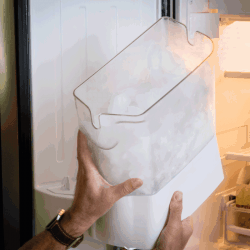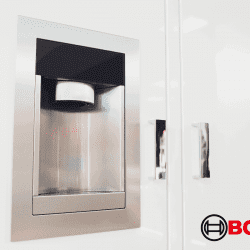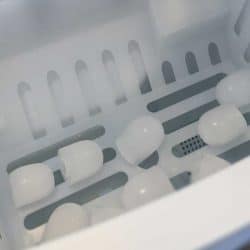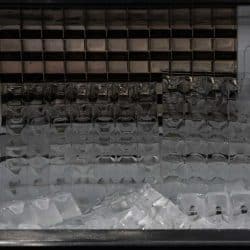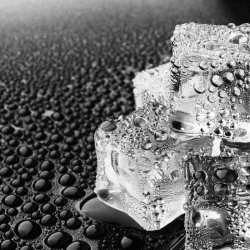Water and ice dispensers are more common than ever in new fridge models. If you've recently purchased a new fridge or are in the market, you might be thinking about adding an icemaker. But does a water dispenser mean that a refrigerator needs a water line? We've checked with appliance experts for all you need to know.
Not all refrigerators need a water line. If your fridge does not have a water/ice dispenser or don't plan to use it, you won't need a water line. You can also find refrigerators that dispense water from a tank, and similarly, require no plumbing.
However, if you want a standard, plumbed ice maker, then, yes, your refrigerator will need a water line.
Read further, and we'll cover all of these options in detail. We'll explain some reasons why people choose not to plumb in their water and ice dispensers and why your fridge might not need a water line. If your fridge does need one, we'll explain how to install it. We'll go over how fridges can make ice without plumbing. And, we'll cover the materials you need.
![A white minimalistic modern contemporary kitchen with white cupboards and cabinets, Does A Refrigerator Need Water Line? [And How To Install One]](https://kitchenseer.com/wp-content/uploads/2022/01/Does-A-Refrigerator-Need-Water-Line-And-How-To-Install-One-1-667x1000.png)
Does A Refrigerator Need A Water Line?
While water and ice dispensers are becoming increasingly popular, some still prefer not to have them. If you won't be running a water/ice dispenser, your refrigerator doesn't need a water line.
Not only are refrigerators without dispensers more affordable, but it also saves the hassle of one more broken part. After all, a fridge without an ice dispenser will never require the effort of asking, "Why is my ice dispenser not working?" If you don't need or use the part, why have it at all?
These parts also come with some inconvenience. They take up space in the door, making less room for food. Models with dispensers may not have doors that are easily reversed, meaning you can't change the door swing to accommodate the layout of your kitchen in the future. And a water line can lead to water leaks, and subsequently, water damage.
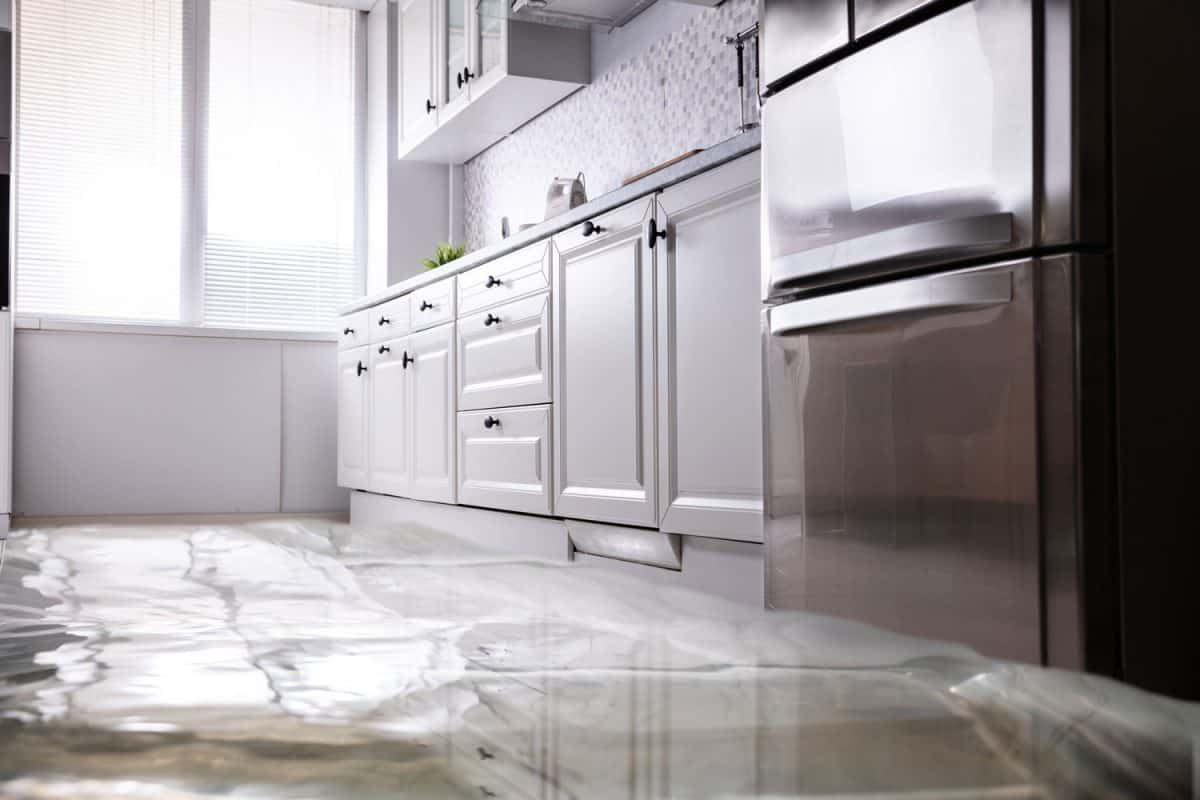
How Much Does It Cost To Put In A Water Line For A Refrigerator?
You can expect it to cost somewhere between $70-$130 to put in a water line for a refrigerator. However, if your old refrigerator already had a working ice maker, then you might be able to skip this expense. It's a one-time cost based on hiring a plumber.
Once you have an adequate water line installed, then simply swapping an old hose for a new one can usually be a relatively simple task. A new hose costs somewhere around $15-$30.
How To Install A Fridge Water Line Yourself
If you don't want to use a plumber, it's possible to install the water line yourself. This project is for an intermediate handyman - if you struggle to use a screwdriver, it's probably not for you.
First, check around the fridge and kitchen to make sure there isn't already an accessible water line somewhere. If you haven't lived in the house for long, it's possible that an old fridge was already plumbed in by the previous owners. If a water line already exists, save yourself some work! It may extend from the wall or up from the floor.
If there is no water line, you'll need to locate the closest water source. It's likely to be whatever feeds your sink or dishwasher. Find the closest connection at a vertical water pipe. Map the shortest, easiest path the water will need to travel to reach the fridge.
You'll need to add 6-8 feet to this, and this extra length will coil behind the fridge. This provides extra slack so that you can move the refrigerator if necessary without pulling out the line.
Once you have the correct hose length, shut off the water supply and run the faucet to drain the pipes. Then, you'll add a valve or fitting to connect the hose to the pipe. Once you've run the hose along the path to the fridge, securing it every few feet, use a wrench to tighten it at both connections.
When it's connected and secure, run the line to flush it out. Dispose of the first few gallons made by the water dispenser and the first few batches of ice.
Do All Fridges With Ice Makers Need Plumbing?
Most fridges with ice makers need plumbing - but not all. There is another option, commonly referred to as a non-plumbed refrigerator. These have a storage tank inside the fridge or freezer, which then dispenses cold water or ice. While you won't have to deal with the expense and bother of plumbing, you will have to refill the tank yourself regularly.

One advantage of a non-plumbed refrigerator is that you have more freedom with placement. You aren't stuck picking a spot for the fridge based on the available plumbing connections. You can put it wherever it works best for your layout.
Some disadvantages, in addition to manually refilling the tank, include:
- The tank takes up extra space in the fridge.
- Limited capacity - if you go through the water quickly, you may not be able to keep it chilled long enough to be useful.
- The tank requires occasional cleaning.
Don't feel like losing room in your fridge or freezer to any kind of ice dispenser? You can always go with a countertop ice maker that produces ice on demand.
Click here to see this countertop ice maker on Amazon.
Do New Refrigerators Come With A Water Line?
Most new refrigerators do not come with a water line. You have to purchase a hose for installation. Metal hoses for a refrigerator have a standard 1/4th inch connector and come in varying lengths. The length you need depends on the distance between your fridge hook up and the sink valve you connect to.
If you are replacing an old fridge, you may be able to reuse the water line. However, be careful when doing so. If the hose has calcification that impedes the water flow, you may not get ideal results.
Also, a worn and old water line may be more likely to crack. A leaking water line can be a real headache. Water damage to the floor or refrigerator may be more expensive than a new hose.
What Material Hose Should I Use?
Refrigerator hoses come in copper, stainless steel, or plastic tubing. There are advantages and disadvantages to each:
- Plastic or PVC tubing: The cheapest option and the one that comes with the majority of DIY ice maker installation kits. It's not very hardy and is the most likely to leak or break eventually. Some people also think it leaves a strange taste in the water.
- Copper: This is the option that most professionals use. It's durable and affordable. The downside of copper is that it isn't as flexible as plastic tubing and kinks easier.
- Stainless steel: Stainless steel, like copper, is durable and strong. However, it's less likely to kink and is easier to handle. Many "DIY" installers prefer this option.
Click here to see this refrigerator water hose on Amazon.
In Conclusion

Fridges without ice or water dispensers do not require any plumbing. You can skip the dispenser altogether if you don't want the hassle of adding a water line. It is also possible to find non-plumbed refrigerators, which dispense water and ice from a tank in the fridge or freezer.
These will require the user to refill the tank regularly, but they also do not need any plumbing. If you prefer a plumbed water or ice dispenser, then you can expect it to cost about $70-$130 for a professional to install it. Most refrigerator units do not come with a water line, and you'll need to buy your own.
If you enjoyed this article, try reading:
Can You Add An Ice Maker To Your Fridge?
What Is The Average Volume Of A Standard Fridge?



